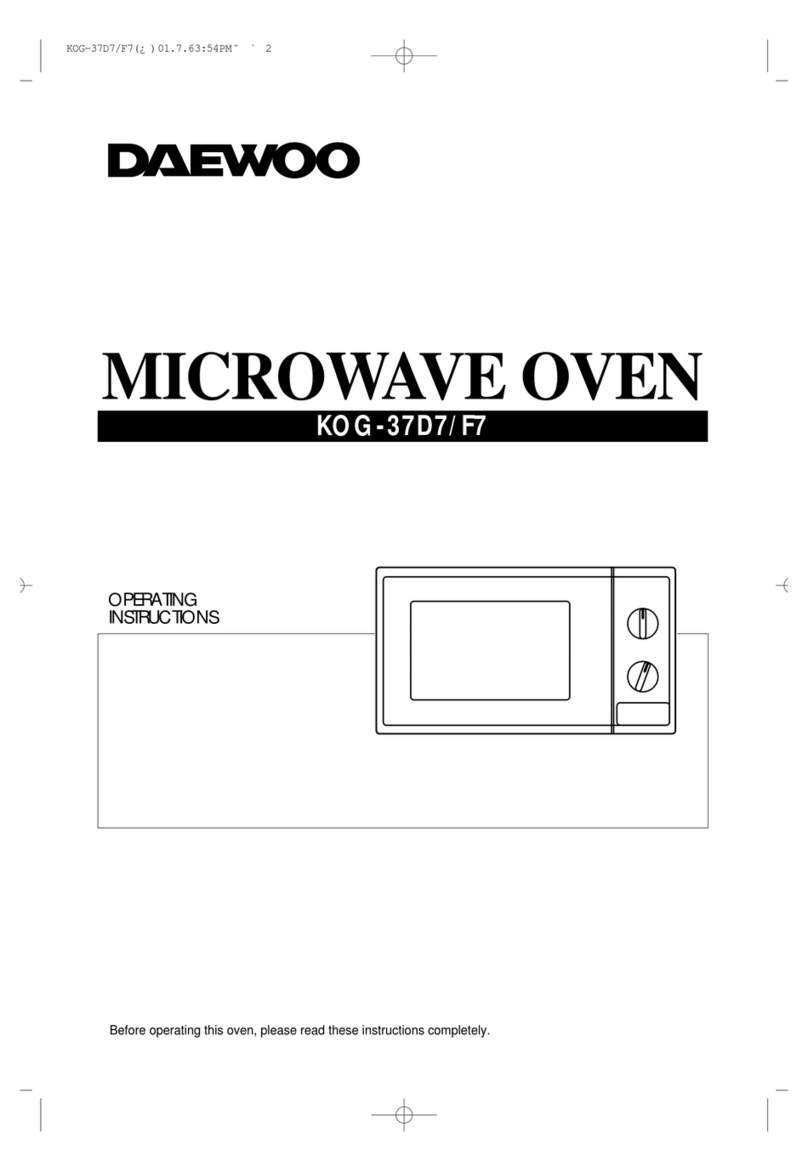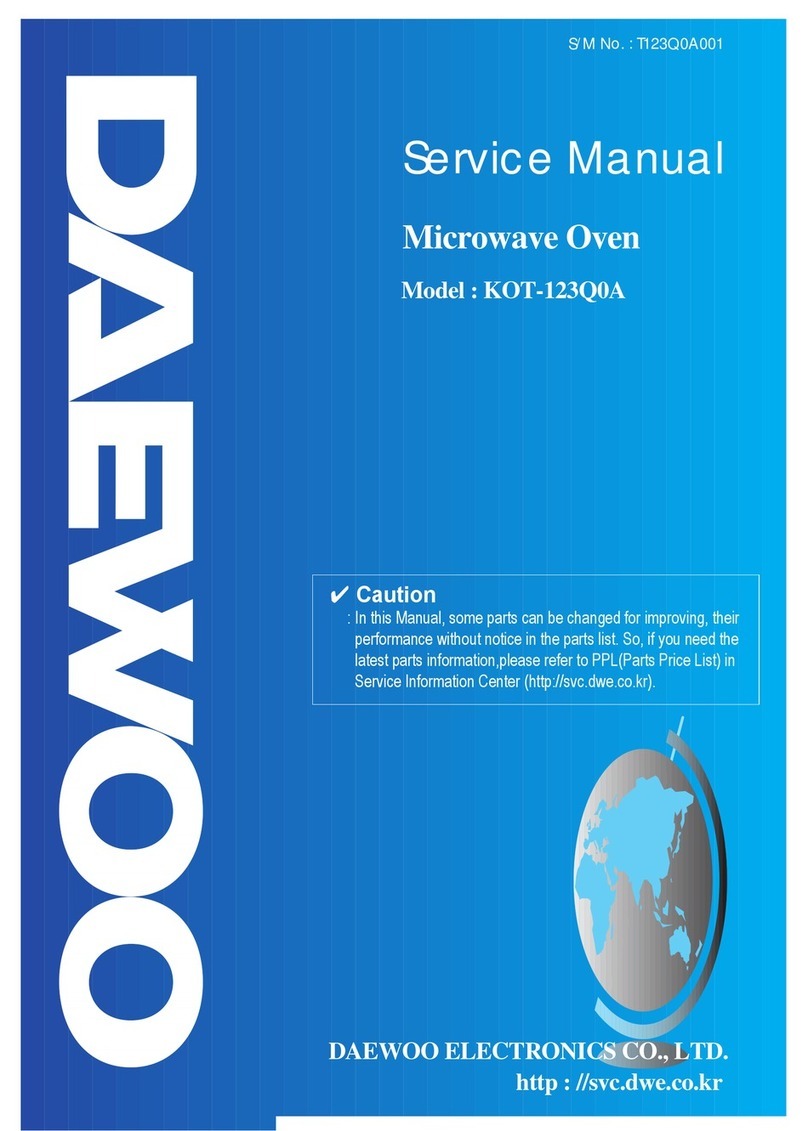Daewoo KOG-36A5 User manual
Other Daewoo Microwave Oven manuals
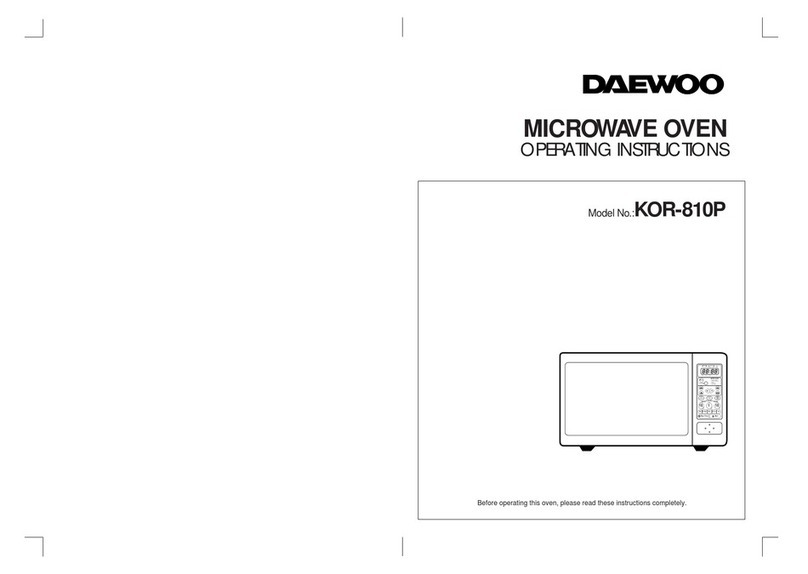
Daewoo
Daewoo KOR-810P User manual

Daewoo
Daewoo KOR-60W User manual
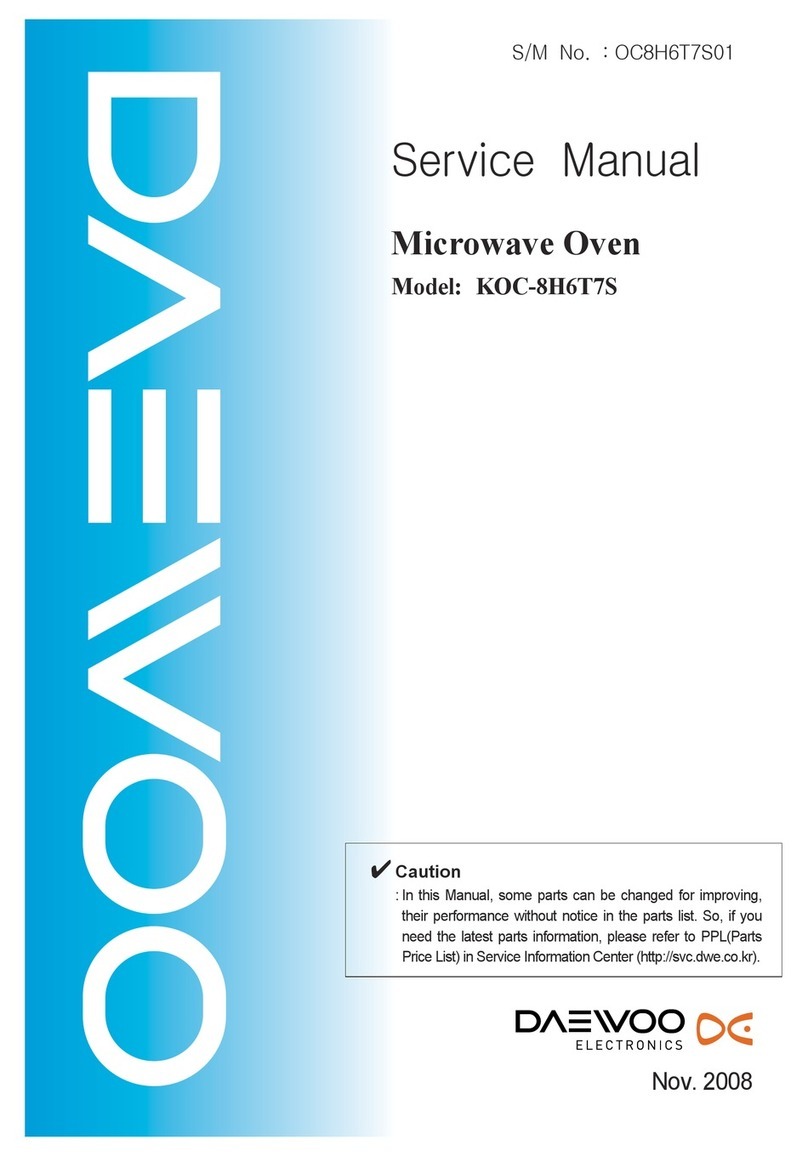
Daewoo
Daewoo KOC-8H6T7S User manual
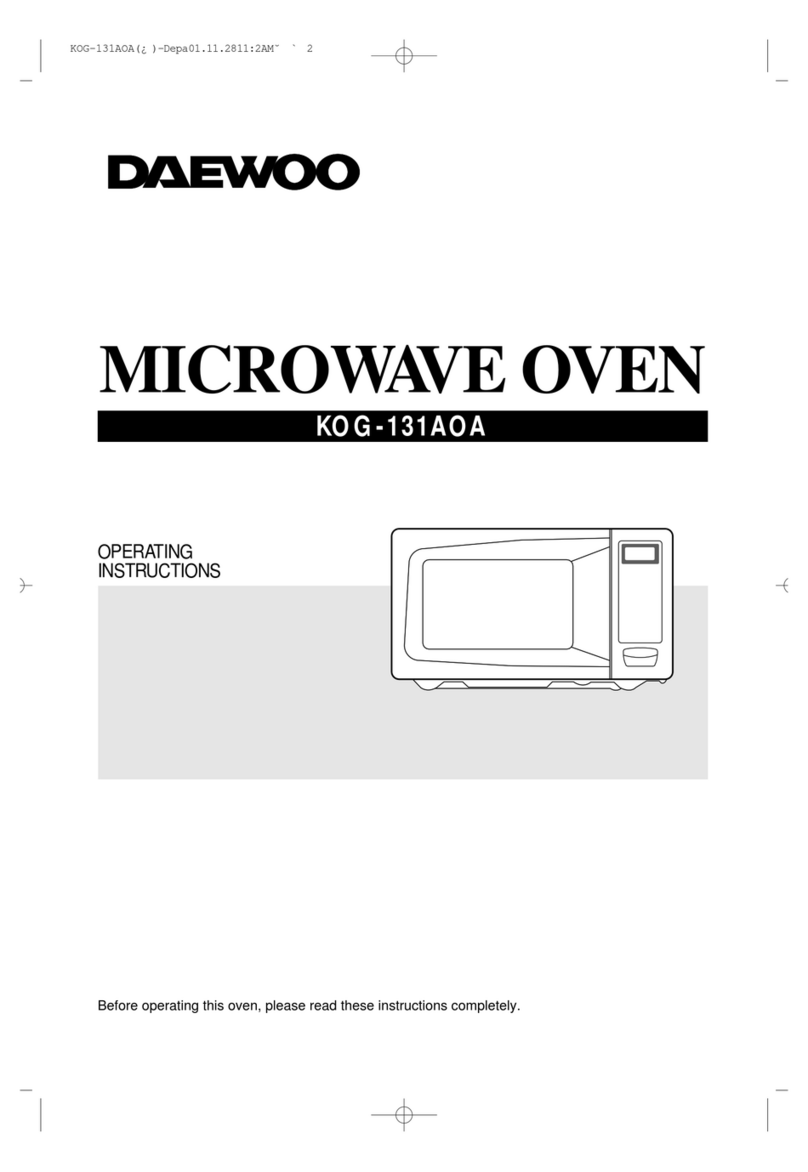
Daewoo
Daewoo KOG-131A0A User manual
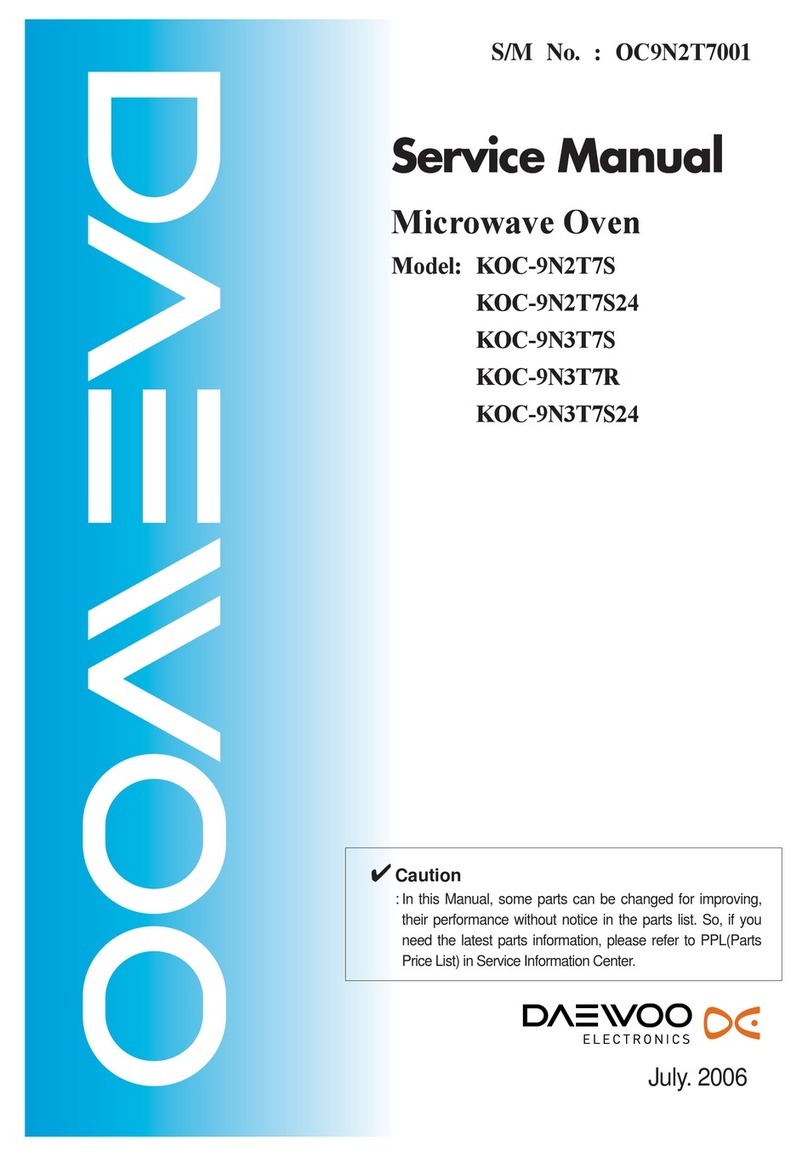
Daewoo
Daewoo KOC-9N2T7S User manual

Daewoo
Daewoo KOR-6N35S Assembly Instructions
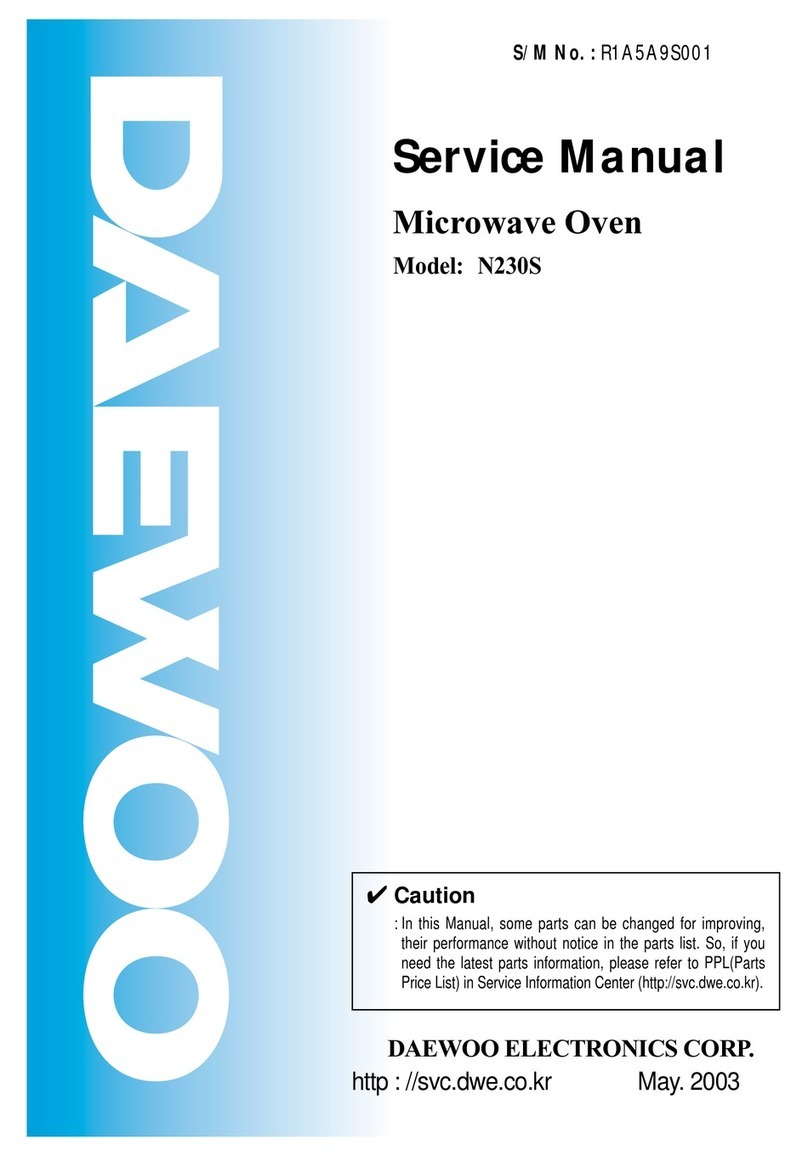
Daewoo
Daewoo N230S User manual

Daewoo
Daewoo KOR-180A0A Assembly Instructions

Daewoo
Daewoo KQG-8A6K5S User manual

Daewoo
Daewoo KOR-611L2S User manual
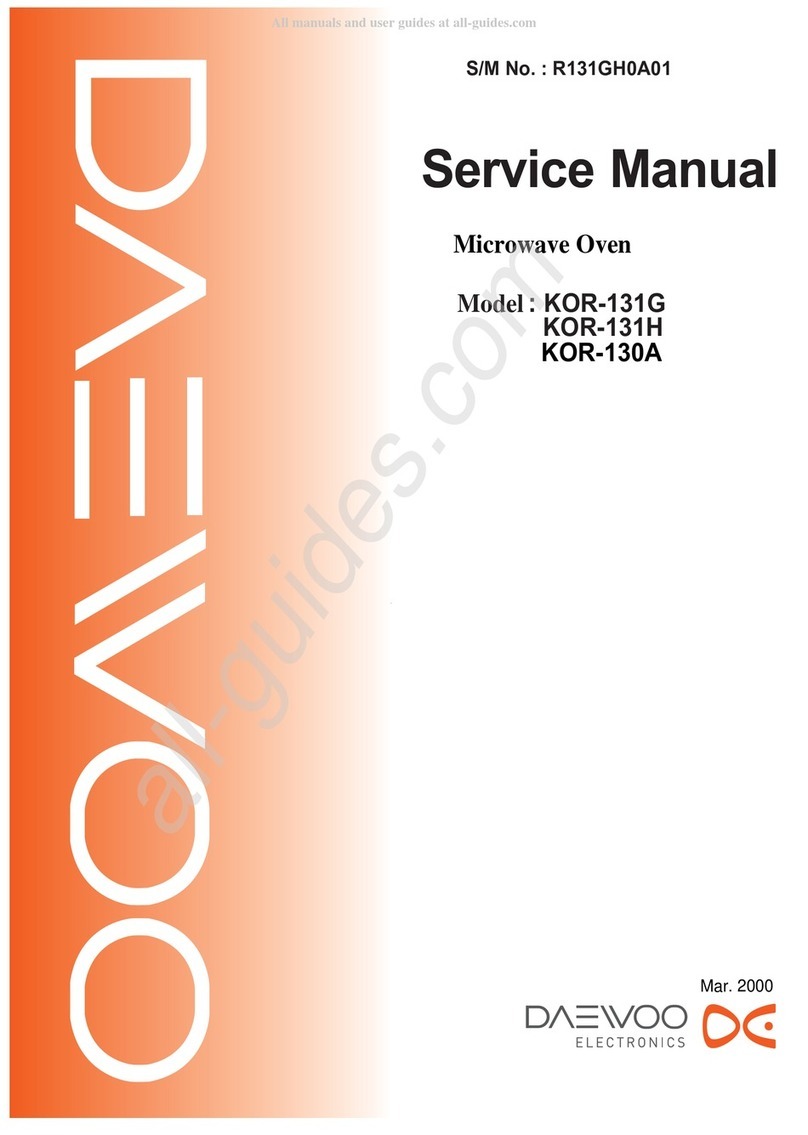
Daewoo
Daewoo KOR-131G User manual

Daewoo
Daewoo KOR-63D59A User manual
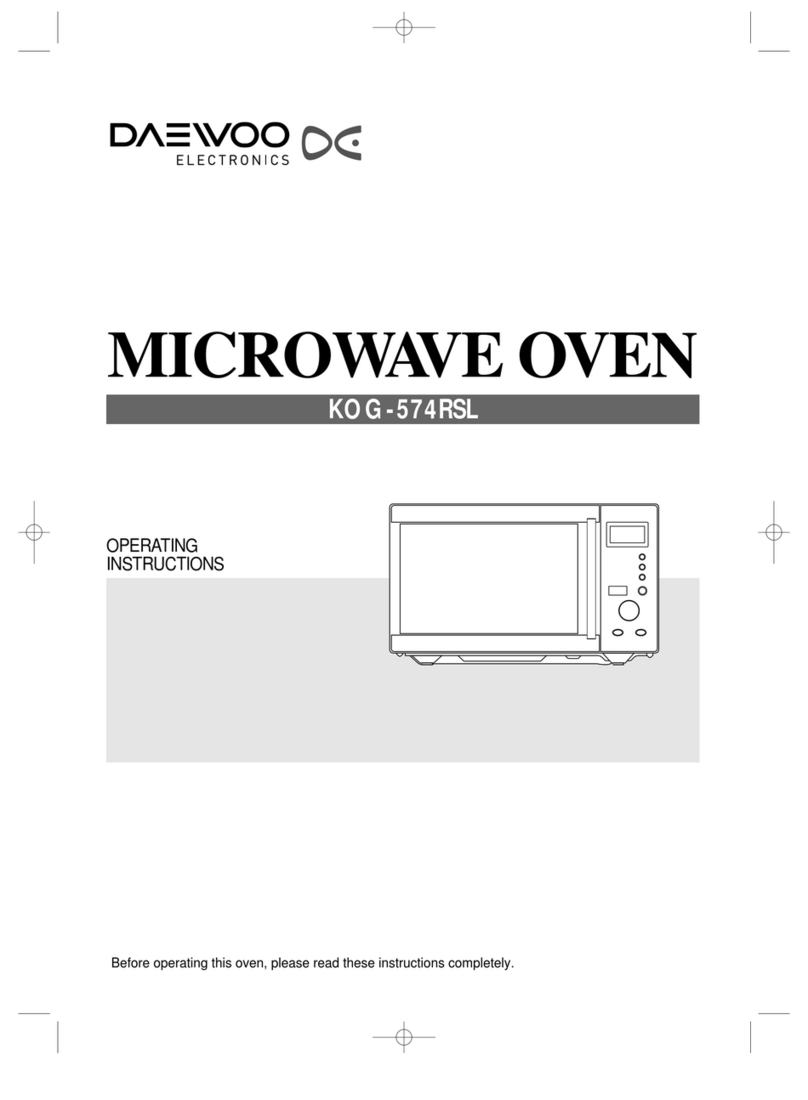
Daewoo
Daewoo KOG-574RSL User manual
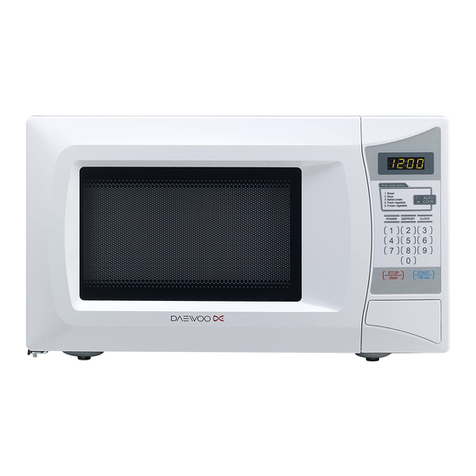
Daewoo
Daewoo KOR-6L0B User manual

Daewoo
Daewoo KOR-86F77S Assembly Instructions
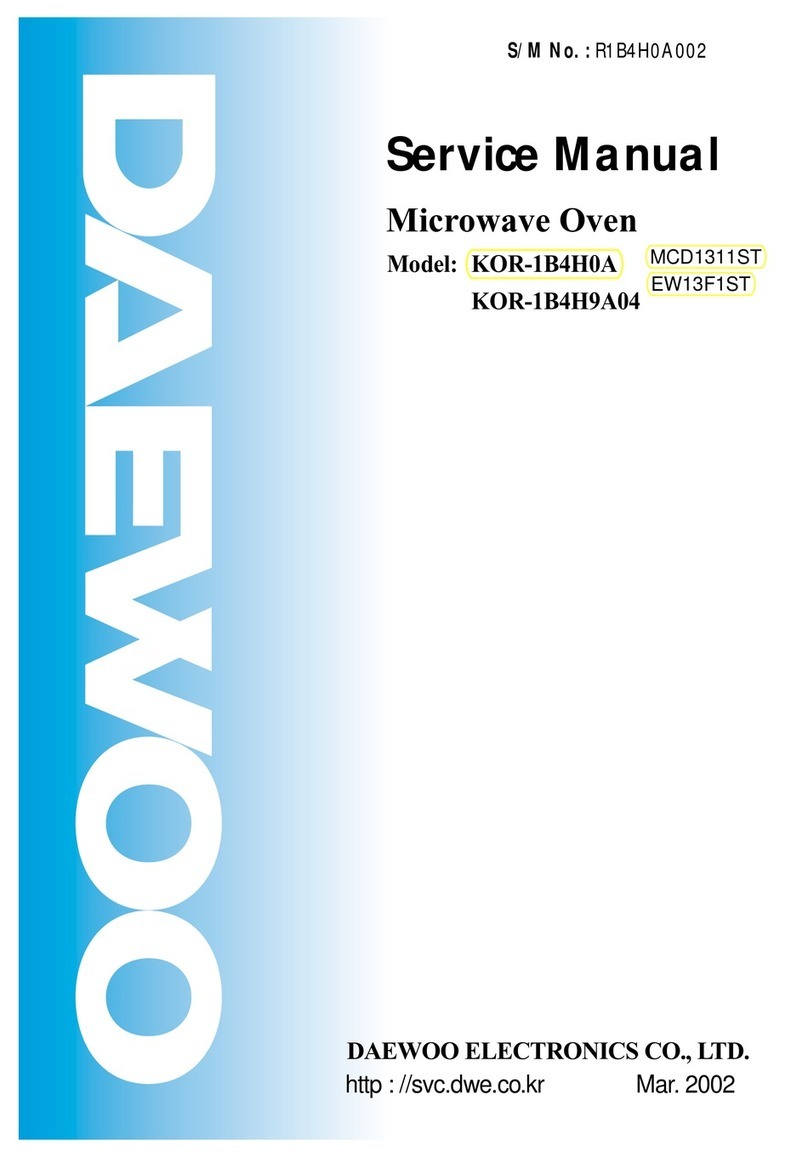
Daewoo
Daewoo KOR-1B4H9A04 User manual
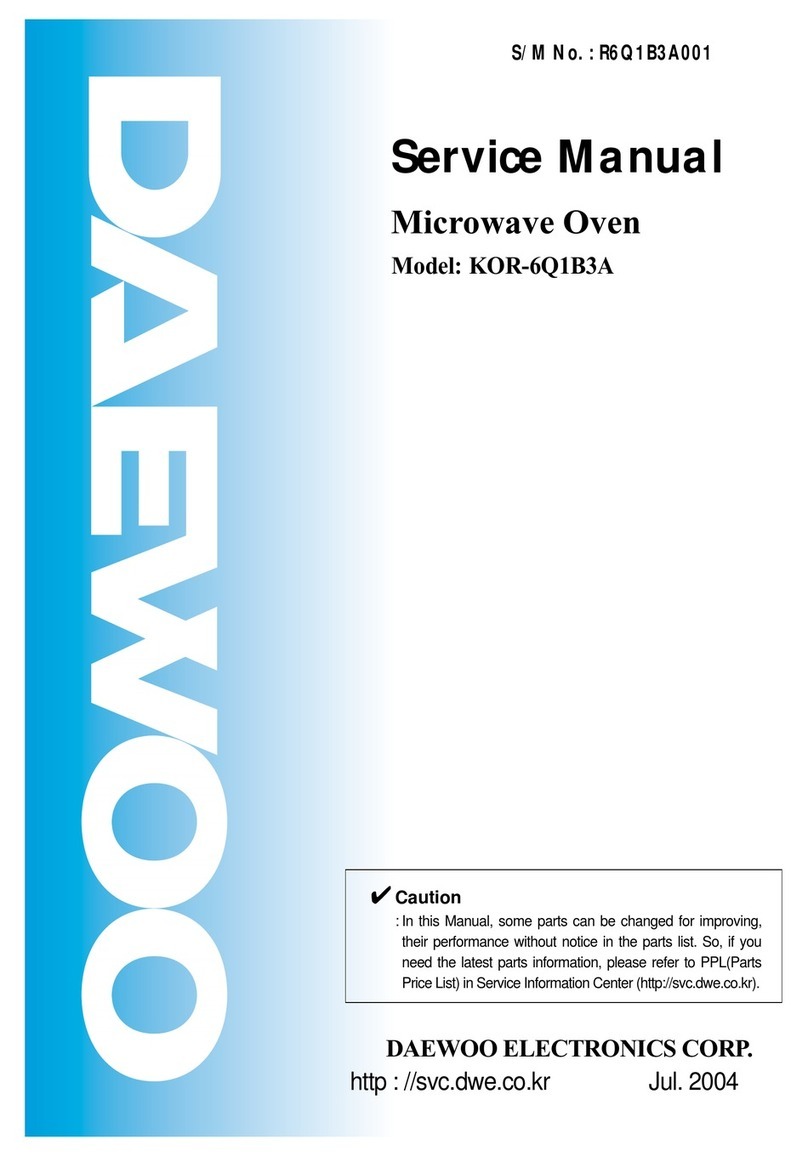
Daewoo
Daewoo KOR-6Q1B3A User manual

Daewoo
Daewoo KOR-86A77S Assembly Instructions
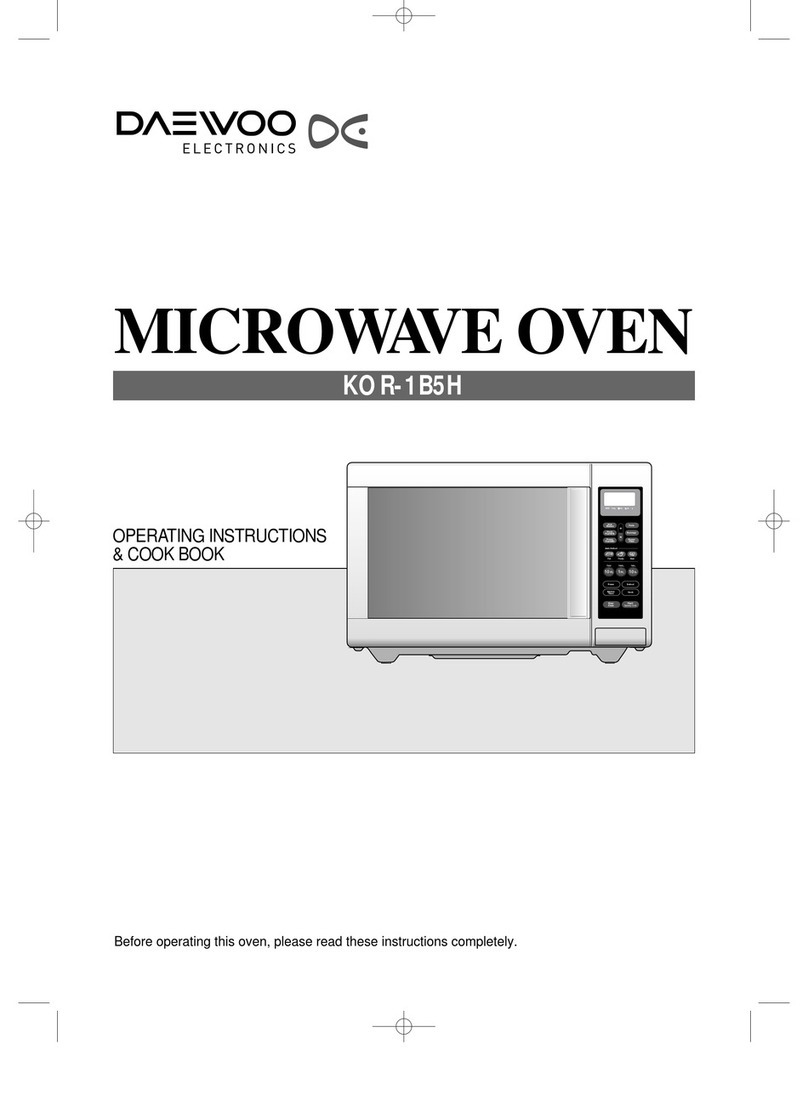
Daewoo
Daewoo KOR-1B5H Assembly Instructions
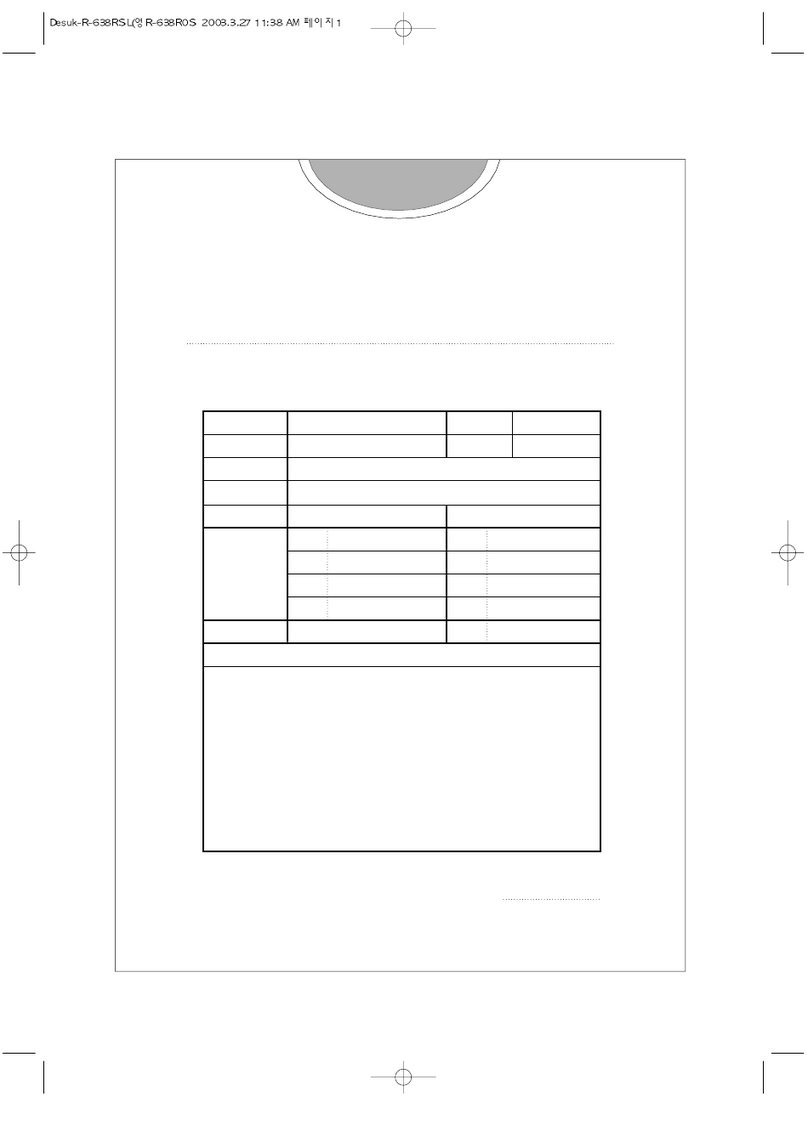
Daewoo
Daewoo KOR-638RSL User manual
Popular Microwave Oven manuals by other brands

Conrad Electronic
Conrad Electronic 2372935 operating instructions

GE
GE Spacemaker JVM1440BH datasheet

DAEWOO ELECTRONICS
DAEWOO ELECTRONICS KOR-6L8K5S83 Operating instructions & cook book

DAEWOO ELECTRONICS
DAEWOO ELECTRONICS KOR-1N5A9S Operating instructions & cook book

Samsung
Samsung M1779 Owner's instructions

GE
GE JES1143 Use and care & cooking guide

Miele
Miele H6200BM(TB) Operating and installation instructions

Jocel
Jocel JMO011480 instruction manual

Sharp
Sharp R-752M Operation manual with cookbook

Electrolux
Electrolux EVL8E00X user manual

STOVES
STOVES Q900GRF DO User, installation & servicing instructions

KitchenAid
KitchenAid KCMS1555 Use and care guide


